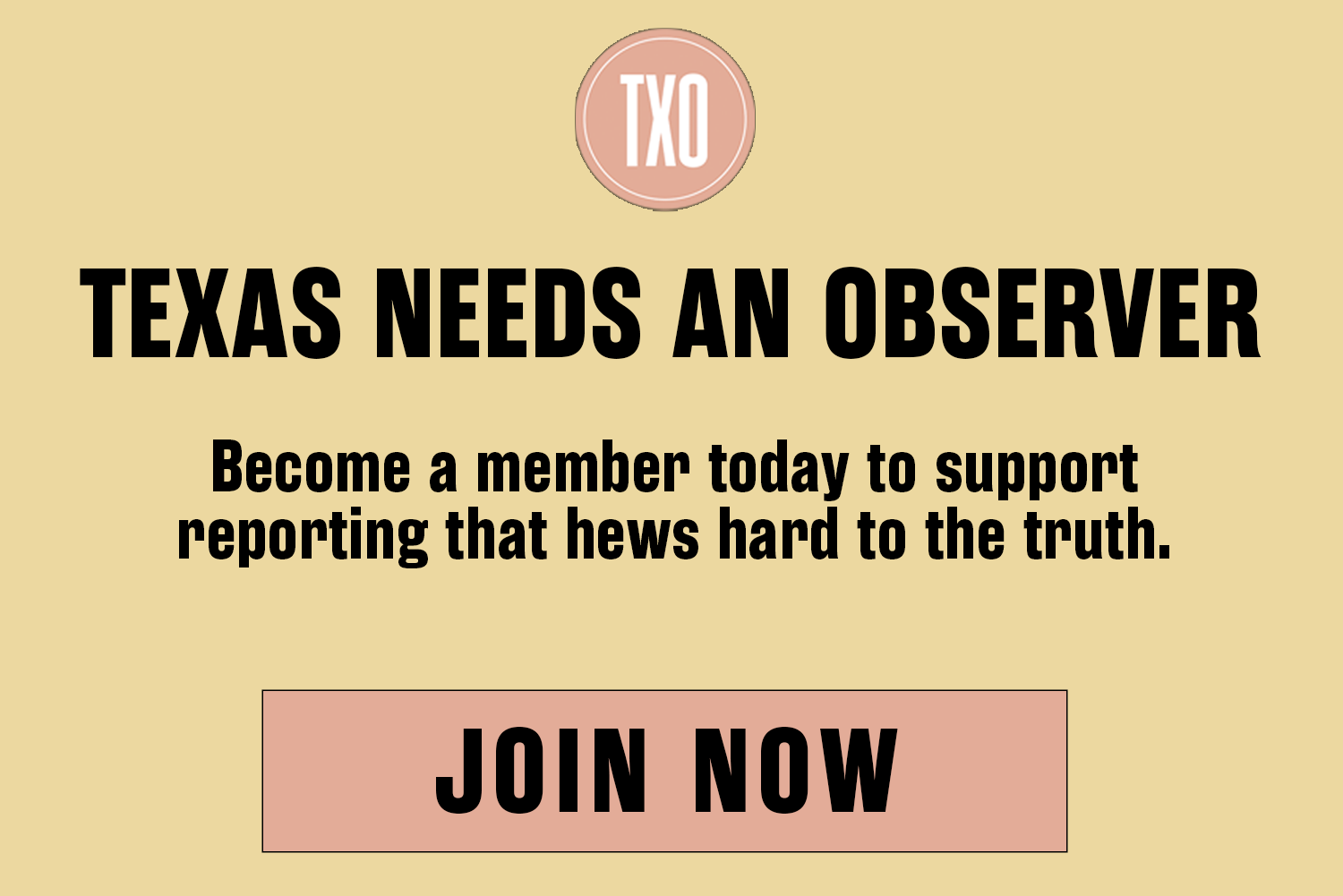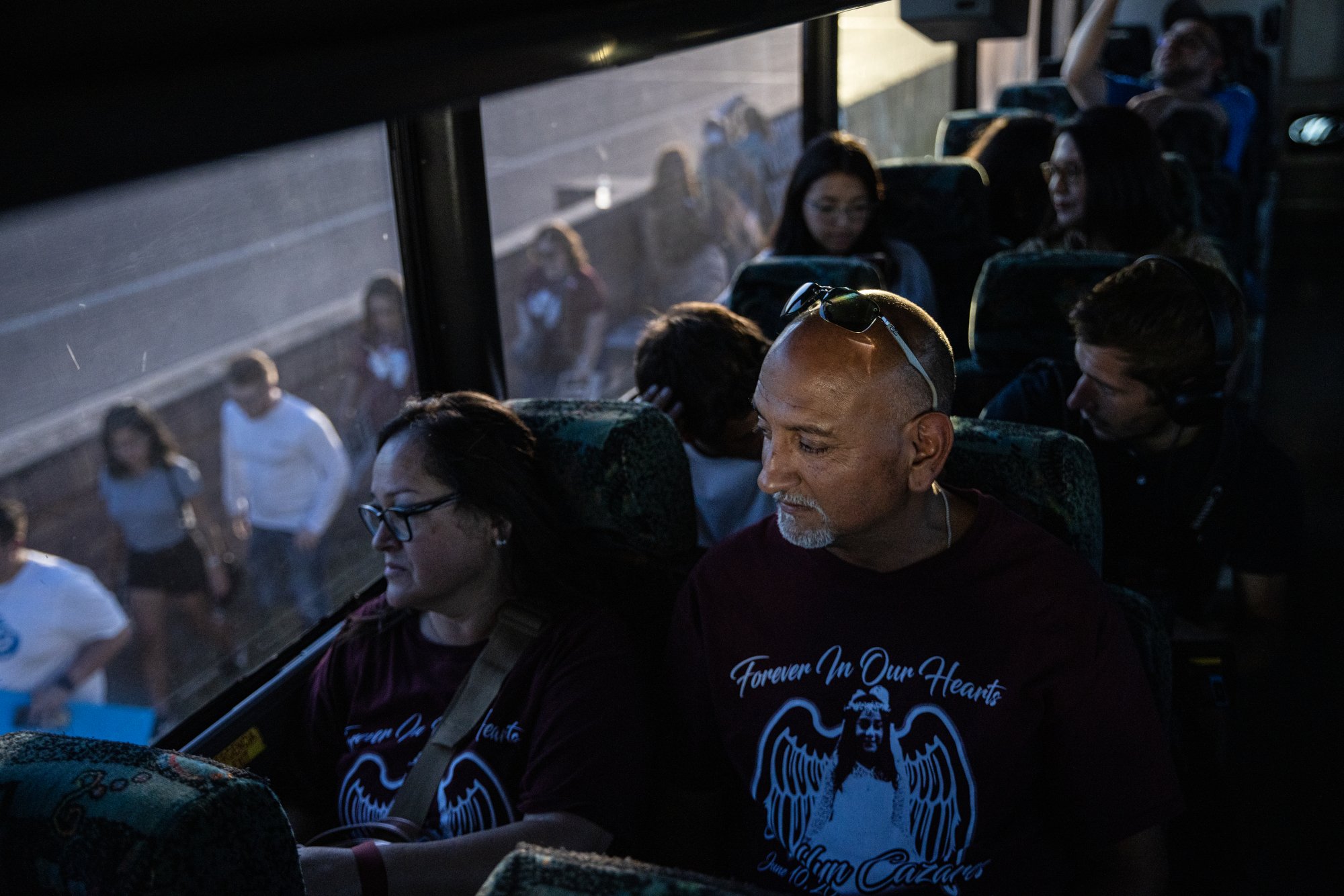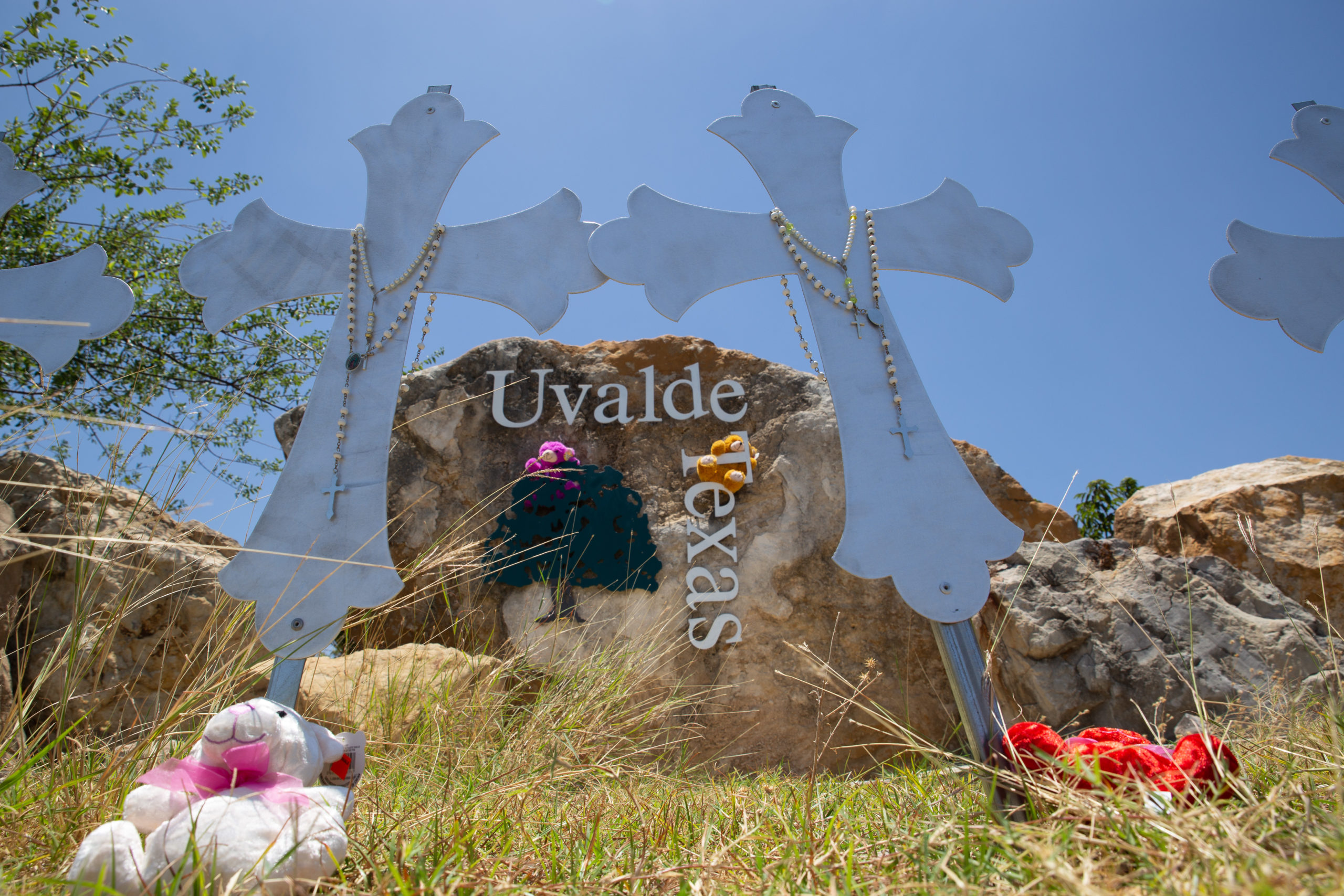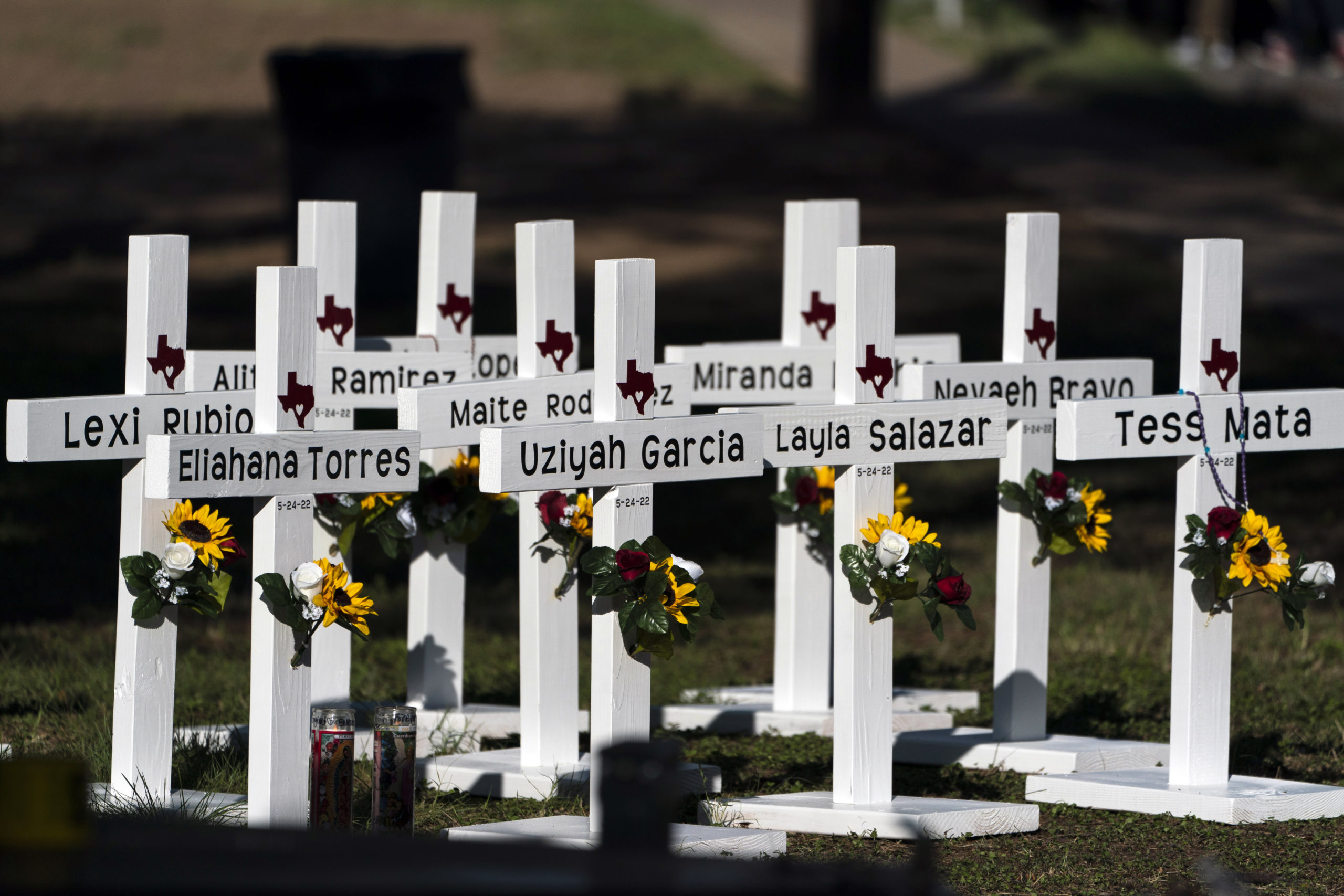
Will Uvalde Be Enough?
The body count linked to Texas’ lax gun laws continues to mount—this time in an elementary school.
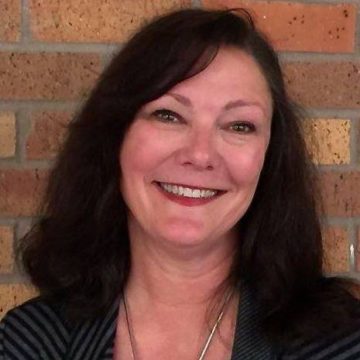
The news that a shooter opened fire Tuesday at Robb Elementary School in Uvalde, killing at least 19 children and two teachers, took me back to an October day in 1991.
A crowd had gathered at Luby’s Cafeteria in Killeen for National Boss’ Day. As diners dug into their plates of fried fish and roast beef, a blue Ford Ranger pickup smashed through the plate-glass window. Some people, thinking the crash was an accident, ran toward the truck to help the driver. Then, George Hennard jumped from the cab and began firing. He walked through the cafeteria, shooting his way methodically through the crowd for a full 10 minutes with two semi-automatic pistols.
He paused only long enough to pack fresh clips into the guns.
Police officers arrived on the scene and returned fire, wounding the gunman, who then killed himself with a shot to the head. First responders described a horrific scene of carnage. Twenty-three people lay dead in the worst mass murder in Texas and U.S. history—at the time.
I covered the Killeen story in 1991 for TIME Magazine as part of an army of reporters dispatched to cover what seemed an unimaginable scenario: What could have spurred anyone to gun down so many strangers in cold blood? Hennard, a 35-year-old unemployed seaman, had previously exhibited signs of violent instability and had run-ins with the local cops. Yet he had no trouble legally buying the two semi-automatic pistols he used in his killing spree—a Glock 17 and a Ruger P-89—or the high-capacity magazines of ammunition.
Killeen held its ignoble record for more than 16 years. Then came Virginia Tech. Orlando. Sandy Hook. The list goes on. In October 2017, a gunman opened fire on a crowd attending a country-western concert in Las Vegas, killing 60 people and himself. That, so far, remains the deadliest mass shooting in U.S. history with more than twice the number of victims as in Killeen.
But only a month later in Texas, a man shot and killed 26 people at the First Baptist Church in Sutherland Springs. In May 2018, 10 people died when a high school student opened fire on his classmates at Santa Fe High School outside Houston. In August 2019, a gunman with far-right beliefs drove from North Texas to El Paso and killed 23 shoppers in a Walmart. Later that month, a shooter killed seven people in Odessa.
One of my former journalism students covered the mass shooting in Odessa. That’s when it hit me: A new generation of journalists is being dispatched to cover a new generation of mass murderers. When will it end?
Killeen held its ignoble record for more than 16 years. Then came Virginia Tech. Orlando. Sandy Hook. The list goes on.
After the Luby’s shooting, then-Texas Governor Ann Richards, a Democrat, held a news conference after attending a prayer service for the dead and injured.
“Dead lying on the floor of Luby’s should be enough evidence we are not taking a rational posture” on guns that can kill so many so quickly, she said.
Three governors and many mass shootings later, dead children lying on the floor of their elementary school in Uvalde provide more evidence. The shooter, identified as Salvador Ramos, a high school student, executed his horrific deed on May 24, 2022, before being shot and killed himself.
Governor Greg Abbott, a Republican, held a news conference to condemn the shooting, which he called “incomprehensible,” and later unleashed an old canard: blaming mental health for the carnage guns wreak. After the Santa Fe High School shooting in 2018, Abbott had spoken of a “red flag law” that would allow judges to takefirearms from people who posed a danger to themselves or others. Nothing came of that due to opposition from fellow Republicans and gun activists. Abbott went on to sign other laws protecting gun owners’ rights.
In 2021, the Texas Legislature passed a law, then signed by Abbott, that allowed Texans to openly carry a gun without any license —so-called “constitutional carry”—in the state.
Gun control advocates are already pointing to the Uvalde school shooting as evidence of the consequences of Texas’ lax gun restrictions. Several state legislators told reporters that Ramos purchased the AR-style rifles he used in the attack after turning 18 earlier this month. Texas law allows those 18 and older to purchase long rifles although the age to purchase handguns is 21. Outside an Abbott press conference in Uvalde Wednesday, Democratic gubernatorial hopeful Beto O’Rourke commented: “It is insane that we allow an 18-year-old to go in and buy an AR-15. What the hell did we think he was going to do with that?”
I have had my own brushes with gun violence. A close friend was killed during a robbery in Dallas in the 1980s. In 1991, right after I covered the Killeen mass murder, a robber and an accomplice forced their way into my Fort Worth home, stuck a handgun in my face, tied me up on the bed, and ransacked my house. They took our valuables—and the firearms we had bought for our “protection.”
I wasn’t hurt physically, but it was terrifying. The experience convinced me that guns offer protection only if there is time and opportunity to use them for self-defense. Usually, though, shooters rely on the element of surprise.
Meanwhile, the evidence of lax gun laws that the late Texas Governor Richards spoke of back in 1991 continues to mount with the mounds of bodies.
When will it ever be enough?
